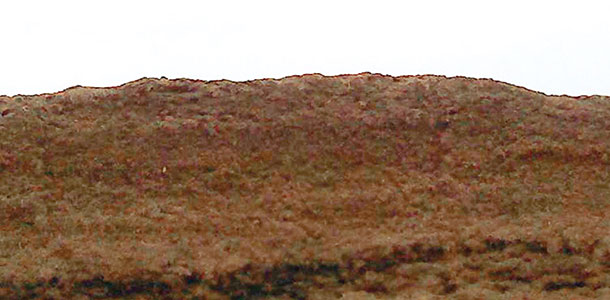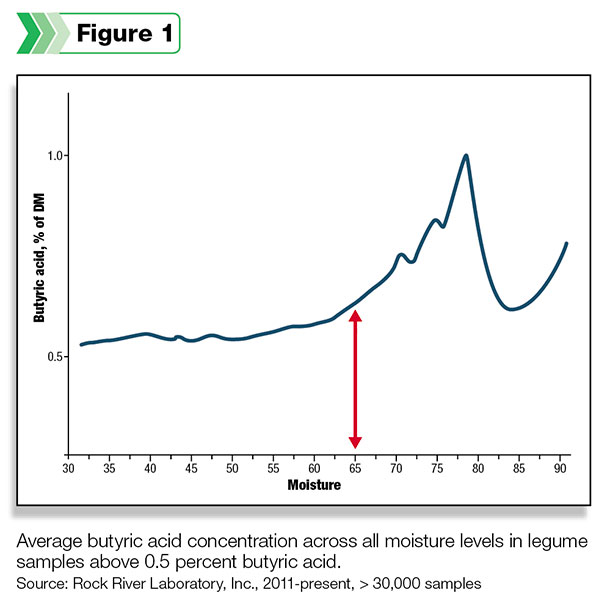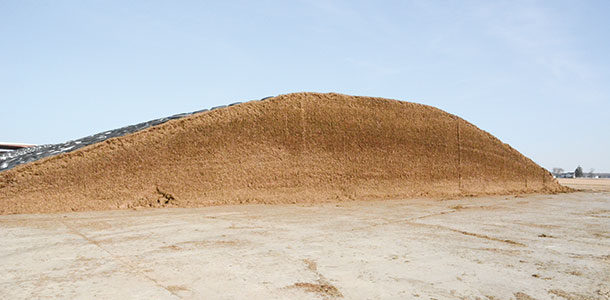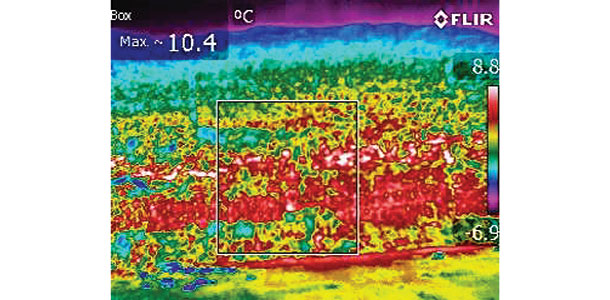Alfalfa haylage is a staple in the diets of high-producing dairy cows across the nation primarily due to its significant contributions of crude protein and physically effective fiber (peNDF) in most TMRs. Still, alfalfa remains one of the most difficult and challenging forages to ensile properly. The vast majority of alfalfa is harvested correctly and ferments properly, but we still see about 5 to 10 percent that goes “butyric” due to clostridic fermentation.
Numerous factors affect silage quality, including maturity, moisture (dry matter content), forage buffering capacity, ash content, temperature, total protein and volume of air per volume of forage.
Alfalfa is especially challenging to ensile due to its buffering capacity and less-than-ideal quantity of water-soluble carbohydrates (WSC). Several of the aforementioned factors represent critical control points where targeted management can enhance yield, fermentation, preservation and overall quality of alfalfa haylage.
Maturity
Generally, tons of dry matter (DM) per acre is the metric used when evaluating the success of various alfalfa haylage production scenarios. Unfortunately, with advancing alfalfa maturity, yield increases but digestibility decreases because the percentage of stem relative to leaf increases correspondingly.
Thus, the optimal metric should be tons of digestible DM per acre. Minimize the indigestible tons that are harvested, hauled, stored and fed in order to improve overall efficiency and decrease manure load.
Maximize digestible DM tons per acre (high yield and high quality) for your alfalfa hybrid, field and growing conditions by taking the first cutting at or near bud stage and the second cutting approximately 28 to 33 days later (or mid-bud), whichever is earlier.

Moisture
Regardless of maturity, the single-most important criterion for successfully ensiling alfalfa is moisture.
At 65 percent moisture or higher (35 percent DM or less), we greatly increase the risk of formation of butyric acid. Butyric acid is the primary indicator alfalfa haylage has gone through “clostridic fermentation,” leading to a reduction in sugar, elevation in pH, degradation of protein, increase in DM loss, “off” odors and poor feedout performance with potential health effects when fed to high-producing dairy cows.
The excessive moisture in alfalfa could be inherent to the crop at harvest due to improper wilting time, deep windrows or a result of environmental rewetting conditions at harvest with rain or heavy dew.
To visually assess moisture in relation to butyric acid, we evaluated data compiled from legume samples submitted to Rock River Laboratory Inc. since 2011. We sorted only legume samples with butyric acid levels above 0.5 percent on a DM basis (Figure 1).

Across a broad range of moisture levels (about 30 to 60 percent), butyric acid concentration averages approximately 0.5 to 0.55 percent for all samples classified butyric (greater than 0.5 percent butyric acid); however, when moisture exceeded 65 percent (35 percent DM), butyric acid concentration increased significantly. Ideally, keep alfalfa moisture below 65 percent (35 percent DM or greater).
Our target moisture is 60 percent (40 percent DM), with a narrow ideal range of 58 to 62 percent (38 to 42 percent DM). Given this target and narrow ideal range, we can realistically expect moisture to stay between 55 to 65 percent (35 to 45 percent DM) under most conditions.
Thus, we minimize the chance of dropping below the 65 percent moisture threshold and significantly improve the likelihood of avoiding “clostridic fermentation.”
Ash
In addition to maturity and moisture, the other practical concern for making alfalfa haylage successfully is ash.
Higher-than-normal ash levels in alfalfa haylage can be a result of picking up additional ash from the soil during mowing, wilting, windrowing and chopping or substantial dry matter (sugar) losses due to a secondary fermentation event. Thus, this critical control point is to minimize the inclusion of soil and ash when harvesting alfalfa for haylage.
We are harvesting alfalfa as highly digestible nutrients for high-producing dairy cows; we are not landscaping. Soil contamination of alfalfa is deleterious for two reasons: It accumulates indigestible ash that serves as “filler” in a nutrient-dense TMR and the potential for higher numbers of clostridia spores to be ensiled with the forage. The additional clostridia spores may potentiate an undesirable fermentation.
In order to accomplish this goal, it may be necessary to raise the cutter height and slow mowing speed. Raising the cutter height (i.e., from 2.5 to 3.5 inches) will reduce total DM yield but will increase DM digestibility.
Mowing at slightly slower speeds will reduce the amount of scalping due to “bounce” of the haybine or discbine. Both measures may serve to reduce the unnecessary inclusion of additional soil and ash.
The bunker
The final critical control point focuses on diligent management at the bunker, pile or storage structure. Additional avoidable losses can range from 10 to 30 percent and occur at the bunker when attention to detail wanes. Oxygen is the enemy. The steps necessary to achieve and maintain oxygen-free conditions are vital to successfully ensiling alfalfa.
- Empower one person to “make the call.” Someone needs to be responsible for stopping the harvesting process when the alfalfa delivered to the bunker or pile is too wet.
- Fill the bunker or pile rapidly to minimize losses due to plant respiration.
- Match harvested alfalfa delivery speed to the bunker or pile to what the push tractor and packing tractors are capable of handling.
- Ensure sufficient packing tractor size and weight to obtain a density of 18 pounds DM per cubic foot or greater. The “rule of 800” is still a good minimum, which is:
Packing tractor weight needed = tons of alfalfa delivered per hour x 800.
- After the last load is delivered and packed, get off the bunker or pile. Additional time spent on the bunker or pile will not necessarily improve DM density. This is especially valuable advice when alfalfa moisture approaches the higher end of ideal or exceeds 65 percent. The additional time on the pile may simply serve to macerate the alfalfa and exacerbate the situation.
- Completely seal the bunker or pile. Whether you line the sidewalls of a bunker or not, use one or two layers of plastic, apply oxygen barrier or a spray-on preservative, and secure with tires or sand/gravel bags to completely seal the bunker or pile. Time is money in the form of lost nutrients due to exposure to oxygen.
Specific attention to the aforementioned critical control points can enhance yield, fermentation and preservation of higher-quality alfalfa haylage in 2015. PD
Keith Bryan is a technical services manager with CHR Hansen Animal Health and Nutrition. He can be contact by email.
PHOTOS
TOP: Good alfalfa haylage doesn’t happen by accident. Compare this pile with the second photo.
MIDDLE: This photo shows the clostridia layer (darker layer) in an alfalfa haylage bunker.
BOTTOM: The FLIR image shows heating (red area) and loss of valuable nutrients associated with the clostridia layer in the same bunker. Photos courtesy of Keith Bryan.







